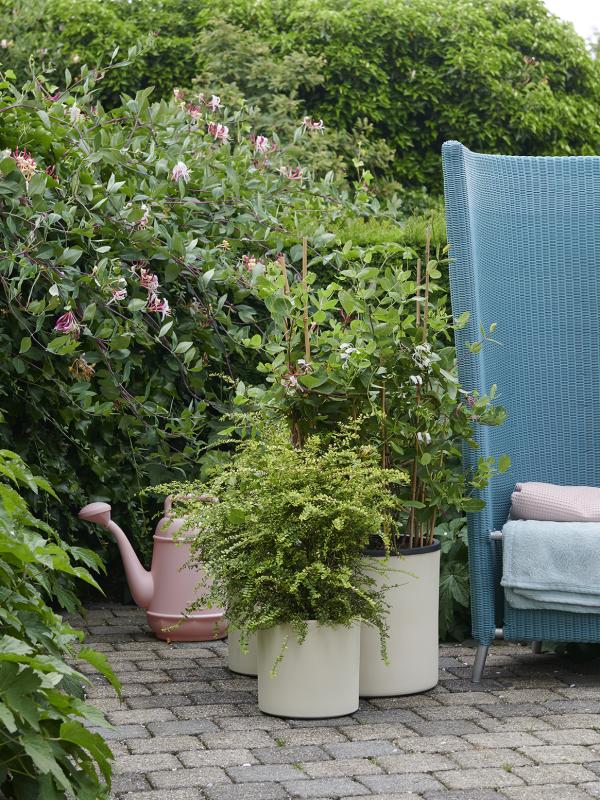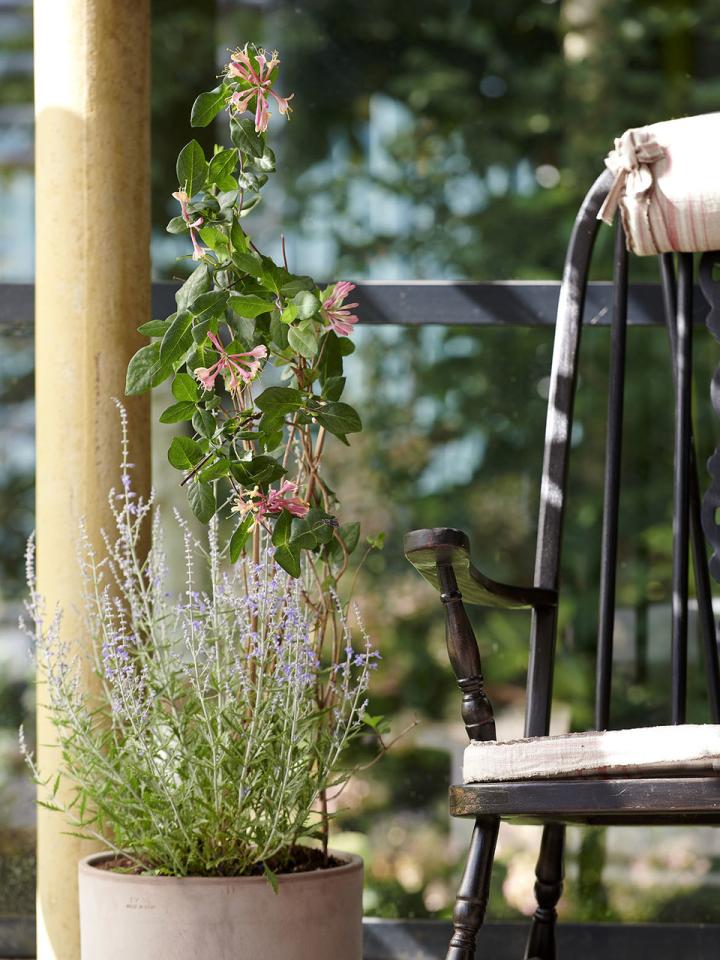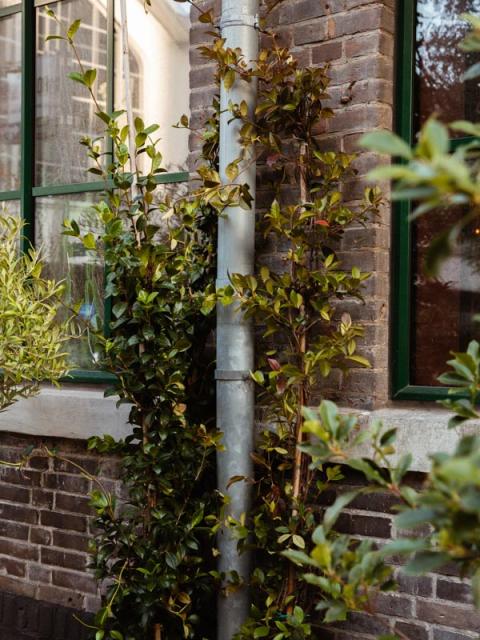During the day honeysuckle (scientific name: Lonicera) treats you to fabulous exotic flowers. And when you walk through the garden in the evening, you will notice that they’re producing even more fragrance. The scent is beautifully soft and sweet, and totally unique. Honeysuckle is an extravagant shrub and climbing plant that easily wraps itself around other plants, trees or a fence post. The flowers are spectacular: a group of tubular petals accompanied by stamens and a selection of tendrils that surround and hang from them like a fringe. The flowers are often dark pink and golden white, although they also occur in other shades. After flowering the plant produces red, blue or black berries. Honeysuckle is available as climbing species and as deciduous and evergreen shrubs. The plant will reach a height of between one and four metres, depending on the species, and flowers from June to the end of September/beginning of October.

Fairytale flowers
Honeysuckle is a member of its own honeysuckle family, and grows mainly in the northern hemisphere. There are some 180 species, of which 100 occur in China, where many poems have been devoted to the plant. Alongside the cultivated garden varieties, honeysuckle also occurs extensively in the wild, particularly on the edge of thickets where the plant can get plenty of sun. The strong, flexible vines were being used as far back as the Bronze Age to make rope.
Trivia
- As the plant of love, honeysuckle is said to stimulate the libido and prompt erotic dreams with its ‘midsummer night scent’.
- The botanical name Lonicera is a tribute to Renaissance botanist Adam Lonitzer
- Honeysuckle is also called ‘goat-leaf’. That corresponds to the French 'chèvre-feuille', German 'Geißblatt' and Italian 'caprifoglio'.
- The name ‘honeysuckle’ is derived from hummingbirds that love the sweet nectar and can fit neatly into the tubular flowers with their narrow beaks.
- During the summer months honeysuckle’s sweet scent is released in the evening at the time when the moths come out. The fragrance tells them exactly where they can find food.






